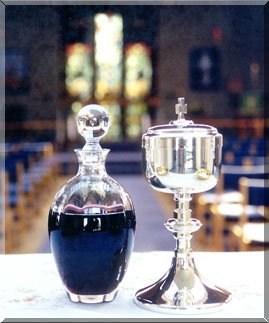Celebrating Easter Twice
All throughout the Commonwealth and the Americas, this year the Anglo/Catholic Easter will be celebrated on the 21st of April. However, Easter will be celebrated on the 28th of April in the Christian Orthodox churches around the world.
Natalia asked an excellent question. She remembered my telling her last year that I had already celebrated Easter and I was joyful that I was in Moldova to celebrate it again with the children.
In Western Christianity, the date of Easter is based on the Gregorian calendar and can fall between March 22 and April 25. The Eastern Christian tradition bases its calculations of Orthodox Easter on the Julian calendar, which differs from the Gregorian calendar by 13 days. This results in a possible date range of April 4 to May 8.
At first, I was first going to write Natalia and jokingly blame Pope Gregory for just wanting to keep us on our toes. But the more I’ve thought about it, the more I feel she deserves an accurate answer and perhaps there might be some here who are interested.
So for all my friends here in Eastern Europe, I hope this helps. And to our friends around the world, I hope this makes sense. (and my usual apologies for being so loquacious!)
On the 1st of April we celebrate the most important date in our Christian calendar. Hopefully, churches will be overflowing. People jokingly say that the CofE (Church of England) also refers to Christmas and Easter – the only days you’ll get a Church of England member into a church. Sadly, that can hold more fact than fiction, sometimes.
But for those who aren’t attending church, and for many who go to church out of a sense of ‘well, we’ve always done it before, so we’ll keep on doing it, although we haven’t a clue what it’s all about,’ they will most likely be celebrating the original pagan festival of ‘Eastre.’ Eastre, ‘ the goddess of springtime and birth,’ or the literal term ‘offspring.’

In early times, missionaries who spread the Gospel, were compelled to blend Christian theology with the then currently practised pagan celebrations. This way, it prevented communities, who would have interpreted the message of Christianity to be detrimental to the growth of crops, from revolting. They would have also seen the promulgation of Christianity as a threat to the villages and health of the residents.
Eventually, the locals came to believe that by adding Christianity to their practices, it ‘might’ help their prosperity. However, at the same time, they held close to their original pagan rituals. Over time, the name Eastre morphed into Easter as more and more became converted.
 The ‘church,’ which increasingly gained power over societies, continued to allow the use of pagan rituals so as to avoid anarchy among the people.
The ‘church,’ which increasingly gained power over societies, continued to allow the use of pagan rituals so as to avoid anarchy among the people.During the first centuries of Christianity, there was great disagreement over the true date of Easter. The first attempt at resolution was made at the First Ecumenical Council meeting, in Nicaea in AD325, which produced an acceptable calculation measured by the position of the moon.
It was agreed that Easter would be celebrated on the first Sunday following the first full moon, after the spring equinox. This was decided as it maintained a close link between scriptural records and the yearly celebration of Eastre/Easter.
However, there continued to be disagreement over the exact dates that Easter fell upon due to the fact that the four Gospels did not provide the actual date of the Resurrection. They only allude to the fact that it occurs in relationship to Passover, and on the first day of the week (Sunday). However, there still remains confusion.
At present Western churches still calculate the date of Easter using the Gregorian calendar, which was introduced in 1582, It remains today as the worldwide standard calendar.
Interestingly, most Orthodox churches, including the Russian church, maintain the older Julian calendar to calculate Easter’s date. Unfortunately, the Julian calendar does not sustain alignment in measuring solar years, such as keeping months in alignment with the seasons.
 There has always been agreement that the celebration of the Resurrection should not be a sign of division among Christians. Unfortunately, that consensus was broken when Pope Gregory XIII reformed the calendar in 1582, thus again changing the dates for Easter. Most Orthodox churches refused to alter the method for calculating Easter.
There has always been agreement that the celebration of the Resurrection should not be a sign of division among Christians. Unfortunately, that consensus was broken when Pope Gregory XIII reformed the calendar in 1582, thus again changing the dates for Easter. Most Orthodox churches refused to alter the method for calculating Easter.In 1998 the World Council of Churches and the Middle East Council of Churches, representing the majority of the world’s churches, agreed to set a common date for Easter. They agreed to use the current formula, but would also adhere to the most accurate astronomical scientific knowledge available. It was felt that this would help overcome any division that existed, whereby both traditions insisted upon retaining their old methods for calculating the date.
This is despite the fact that the formula actually isn’t entirely faithful to the original formula laid down by the early church. The formula, or algorithm, used today is known as the Nicaea formula. Unfortunately, a definitive decision regarding which calendar would be followed still has not been agreed.
So, during this decade there are actual dates when both calendars do fall on a common date. They included 2014 and 2017.
Despite this decision, there have been occasions when the world churches have had to resist intense pressure from governments, which were presumably pressured by highly paid lobbyists, and businesses, to hold Easter on the same date every year. (Sorry Hallmark, Nestlé, and Hershey).
The churches have been resolute in their determination to remain faithful to the Nicaea formula. The Resurrection is a divine event that keeps check with reality, rather than the convenience of world governments and its’ powerful businesses.
With all the discord that exists between churches, we pray that in the coming years there will be an agreement whereby we can all celebrate together.
 In America, Britain, Australia and a few other countries, the ‘Easter egg’ and ‘Easter bunny’ stand as the commercial understanding of Easter. The bunny also originated with the pagan festival of Ēastre, and again, through the goddess Ēostre, Anglo-Saxons worshipped the goddess through her earth-bound symbol the rabbit.
In America, Britain, Australia and a few other countries, the ‘Easter egg’ and ‘Easter bunny’ stand as the commercial understanding of Easter. The bunny also originated with the pagan festival of Ēastre, and again, through the goddess Ēostre, Anglo-Saxons worshipped the goddess through her earth-bound symbol the rabbit.It was German settlers who brought the symbol of the rabbit to the Americas. In fact, it wasn’t embraced by the Americans until shortly after the Civil War. It may come as a surprise to some, that even the Resurrection itself wasn’t celebrated in America until the mid to late 1800’s.
The ‘Ea
 ster egg’ dates back to the earliest of time when it was a symbol of rebirth in most cultures. It was introduced to the Americans just after the Civil War.
ster egg’ dates back to the earliest of time when it was a symbol of rebirth in most cultures. It was introduced to the Americans just after the Civil War.In Eastern Europe the egg holds similar symbols of rebirth, but the spiritual attachment runs much deeper. To Orthodox Christians, the Paschal egg became the sealed tomb wherein the body of the Lord had been placed after His crucifixion.
Traditions state that the custom of the egg had its start with Mary Magdalene, who is often depicted in icons holding a red egg. She may have been aware that the Romans would know the meaning of the egg as something that brings forth life from a sealed chamber.
After Jesus was crucified and ascended to Heaven, Mary was in Rome. When she met with the Roman Emperor Tiberius, she gave him a red coloured egg and announced, 'Christos anesti!' (Christ is Risen!) She then went on to preach to Tiberius about Jesus. It was an intelligent choice on her part because it was something the Romans would have understood.
In the early days of Christendom, red was the only colour used in colouring the eggs, as it
 signified the sacred blood of Jesus which had been shed on Calvary.
signified the sacred blood of Jesus which had been shed on Calvary.During our Orthodox Paschal services in Moldova, the priest will bless the eggs. They are then distributed. The worshippers greet one another with the words ‘Christ is risen!’ (Hristos a înviat). At the same time they hit their egg against the other person’s as they respond ‘He is Risen Indeed!’ (El a înviat cu adevărat!). This supplication symbolises a mutual prayer for the breaking of one’s bonds of sins and misery. It also stands for entering the new life we receive from Christ’s resurrection.
Eventually, none of the eggs will remain unbroken. The breaking of the egg emphasises that our Lord had conquered death and is risen, granting new life to all. The egg is then consumed as a symbolic breaking of the Lenten fast.

There are many variations on the use of the egg throughout religions. Even in Iran, the egg is used during Nowrooz, which is the Persian New Year. It too celebrates new life.
I consider myself very fortunate, in that I have the honour of celebrating Christ’s resurrection twice; in England, and with my friends in Moldova, Romania and The Ukraine. Regardless of where I am in person, I will certainly be in spirit!
He has Risen Indeed!
How blessed is this day, when earth and Heaven are joined and humankind is reconciled to God! May the light of Jesus shine continually to drive away all darkness. May Christ, the Morning Star who knows no setting, find His light ever- burning in our hearts—He who gives His light to all creation, and who lives and reigns for ever and ever. Amen. BCP '79
Írásos Bill atya gyűjteményéből. Imádkozunk az egészsége. LR
Labels: Customs, Easter in Moldova, Easter Traditions, History of Easter, Orthodox Easter, What is Easter, Why do Easter Dates change? Traditional Moldova Easter, Why do Easter Dates change? When is Easter?




